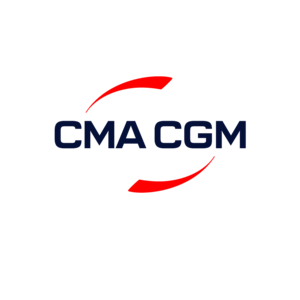CMA-CGM
CMA CGM Group is a global player in sea, land, air, and logistics solutions, serving more than 420 ports in 160 countries. It is one of the world's leading container shipping companies.



Needs
CMA CGM embarked on a major infrastructure transformation to migrate its extensive application landscape (approximately 1700 applications) from three on-premise data centers to AWS. This strategic move aimed to enhance agility, scalability, and operational efficiency. The project required a structured approach to application review, the development of numerous infrastructure design patterns, rigorous financial and cost model rationalization, modernization of documentation practices, and a strategic plan for database migration and optimization.
Solution
A large-scale migration of 1700 applications from on-premise data centers (Marseilles, Aix-en-Provence, Paris) to AWS (Dublin region) was undertaken. Around 120 distinct infrastructure design patterns were developed and implemented across various technology domains. For cost rationalization and management, CMA CGM utilized AWS native tools (AWS Cost Explorer, AWS Budgets, AWS Trusted Advisor) alongside a third-party cloud financial management platform (e.g., CloudHealth by VMware or Flexera One). HOPEX was enhanced for comprehensive infrastructure documentation. High-Level Designs (HLDs) and Low-Level Designs (LLDs) were modernized using Confluence, replacing traditional Word and PowerPoint documents. ServiceNow was reviewed and updated for accurate infrastructure and software inventory management. A key part of the solution involved qualifying design patterns for database migrations, including Oracle Exadata Cloud at Customer (ExaCC) to services like Amazon RDS for PostgreSQL, Amazon RDS for SQL Server, Amazon DocumentDB (for MongoDB workloads), and other suitable NoSQL solutions on AWS. Integration between migrated and new cloud services was managed using AWS native integration services (e.g., AWS API Gateway, AWS Step Functions).
Achievements
Large-Scale AWS Migration: Successfully reviewed 1700 applications and migrated a significant portion from three on-premise data centers to the AWS Dublin region.
Infrastructure Design Pattern Implementation: Developed and implemented approximately 120 robust and reusable infrastructure design patterns on AWS.
Cost Model Rationalization: Implemented effective cost management using a combination of AWS tools (AWS Cost Explorer, AWS Budgets) and a non-AWS tool (e.g., CloudHealth by VMware) for comprehensive visibility and control.
Documentation Modernization: Enhanced HOPEX for infrastructure architecture documentation and transitioned HLD/LLD to Confluence for collaborative and accessible documentation.
Inventory Management Update: Reviewed and updated ServiceNow to ensure an accurate and current inventory of infrastructure and software assets in the cloud.
Strategic Database Migration: Successfully qualified design patterns and executed migrations for various database technologies (Oracle ExaCC to PostgreSQL, MS SQL Server, MongoDB/DocumentDB) on AWS, optimizing for performance and cost.
Benefits
Enhanced Agility & Scalability: Leveraged AWS cloud capabilities for rapid scaling of resources and increased business agility.
Operational Efficiency: Streamlined IT operations and management through standardized cloud infrastructure and modernized tooling.
Optimized Cloud Spend: Achieved significant cost savings and better financial governance through comprehensive cost rationalization and management tools.
Improved Collaboration & Knowledge Management: Modernized documentation practices using Confluence led to better collaboration and accessibility of technical information.
Future-Ready Infrastructure: Established a modern, scalable, and resilient infrastructure on AWS, prepared for future growth and innovation.
Database Modernization: Optimized database landscape for better performance, scalability, and cost-effectiveness using diverse AWS database services.